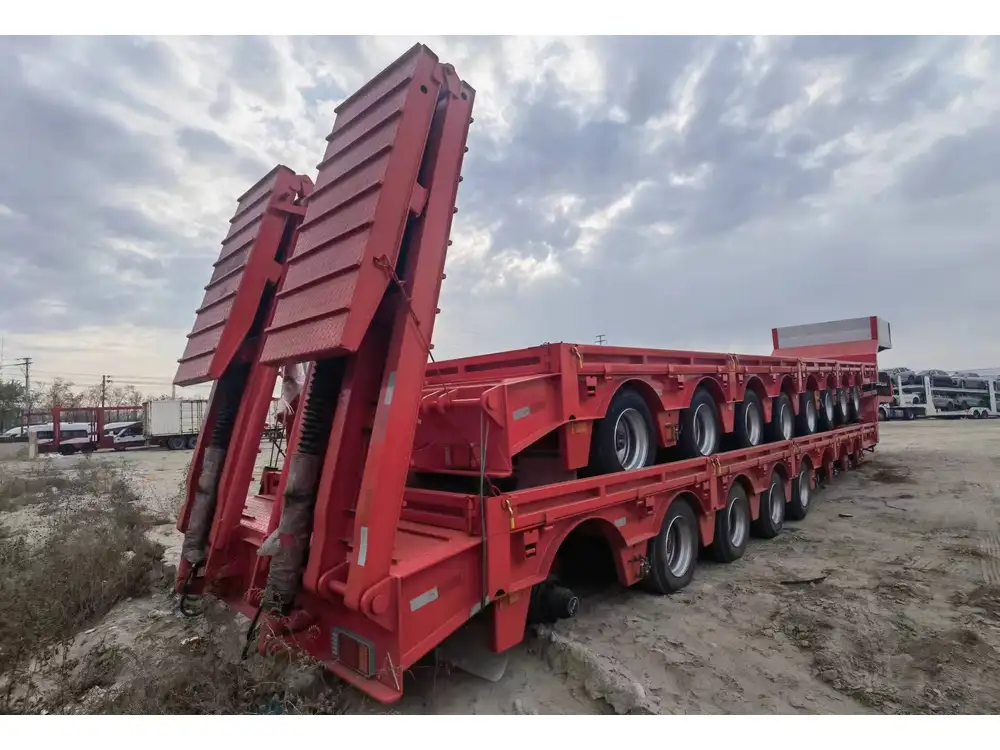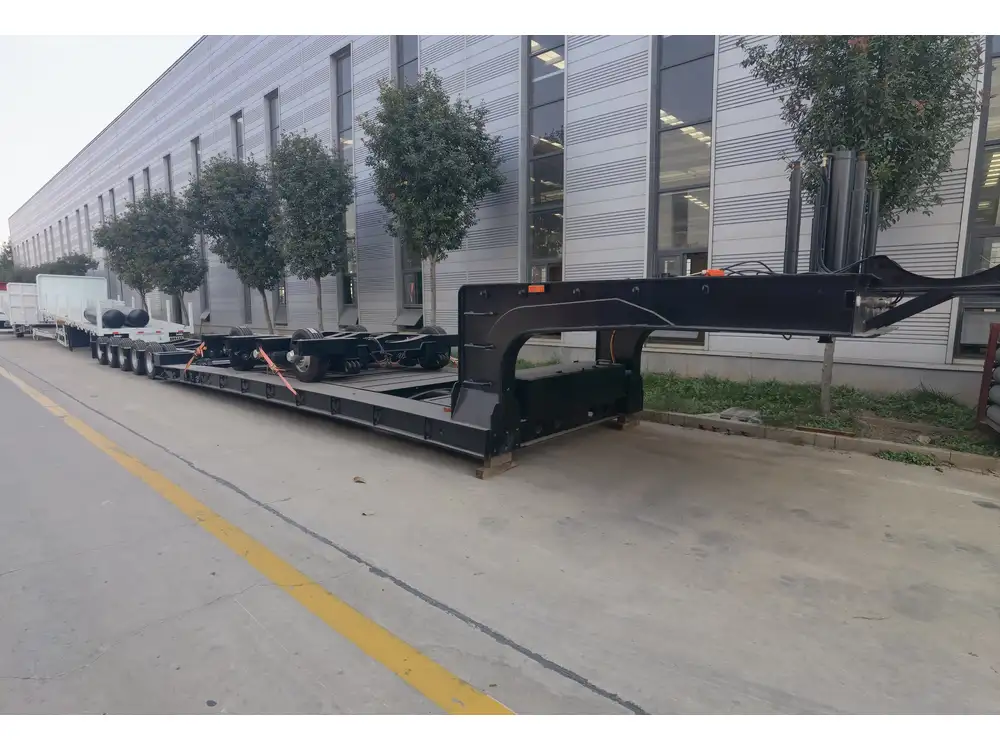When contemplating the practicality of fitting a truck inside a dump trailer, several factors come into play: dimensions, weight capacities, and the intended utility of both equipment types. We will explore these considerations meticulously to provide a comprehensive understanding of whether such a feat is functional or feasible.
Understanding Dump Trailers: An Overview
What is a Dump Trailer?
A dump trailer is a specialized type of trailer designed to transport and unload bulk materials. Typically featuring hydraulic lifting mechanisms, these trailers tilt to a significant angle, allowing for the controlled discharge of materials such as gravel, sand, or dirt.

Standard Dimensions of Dump Trailers
- Length: Varies from 10 to 20 feet, with larger models reaching up to 30 feet.
- Width: Generally ranges from 6 to 8.5 feet.
- Height: Varies depending on the model, usually between 4 and 6 feet.
| Trailers Dimension | Small Dump Trailer | Medium Dump Trailer | Large Dump Trailer |
|---|---|---|---|
| Length | 10-12 feet | 14-16 feet | 20-30 feet |
| Width | 6 feet | 7-8.5 feet | 8.5 feet |
| Height | 4-5 feet | 5-6 feet | 5-6 feet |
| Typical Capacity | 5-10 tons | 10-15 tons | 15-20 tons+ |
Weight Capacity
The weight capacity of dump trailers varies significantly based on their construction materials and design. Most dump trailers can safely carry between 10,000 to 30,000 pounds, depending on their size and the manufacturer’s specifications. It’s essential to consult the manufacturer’s specifications for precise load limits.
The Truck: Size and Capacity Profiles

Understanding Truck Dimensions
When evaluating if a truck can fit in a dump trailer, we must dissect truck sizes, typically measured by:
- Length: Average lengths vary from 15 to 25 feet.
- Width: Standard widths range from 6 to 8.5 feet.
- Height: Average heights can range from 6.5 to 10 feet for larger vehicles.
| Truck Type | Length | Width | Height | Average Weight |
|---|---|---|---|---|
| Light-Duty Truck | 15-20 feet | 6-7.5 feet | 6.5-8 feet | Up to 10,000 lbs |
| Medium-Duty Truck | 20-25 feet | 7-8.5 feet | 8-9 feet | 10,000 to 26,000 lbs |
| Heavy-Duty Truck | 25-30 feet+ | 8-9 feet | 9-10 feet | 26,000 lbs and more |
Assessing Weight Classifications
Considering weight is critical, as a truck’s weight will influence if it’s realistic to load it into a dump trailer. For example, a light-duty truck might weigh approximately 6,500 pounds, while heavy-duty versions can weigh upwards of 40,000 pounds or more.
Can You Fit a Truck in a Dump Trailer? An Analytical Approach

Size Compatibility Check
To determine if a truck can be accommodated within a dump trailer, we need to look squarely at dimensions:
- Length Analysis: Most dump trailers stretch 10 to 30 feet. Assess your truck’s length to see if clearance is adequate.
- Width Evaluation: Dump trailers can accommodate standard vehicle widths (up to 8.5 feet).
- Height Consideration: Although most dump trailers are functional for high loads, the truck’s height may limit the ability to fit entirely inside.
Comparison of Space
Let’s create a scenario to visualize possibilities:
- Small Dump Trailer (Max Length 12 ft): Best suited for transport of smaller, lighter trucks.
- Medium Dump Trailer (16 ft): Potentially, a medium-duty truck could fit, but checking the trailer’s interior measurements is essential.
- Large Dump Trailer (20-30 ft): Large dump trailers have a greater chance of fitting larger trucks, in terms of both length and weight, assuming adequate load distribution.
Practicality of Loading a Truck into a Dump Trailer

Factors to Consider
- Loading Mechanism: Most dump trailers are not configured for loading a vehicle; thus, they lack necessary ramps.
- Weight Distribution: Maintaining proper weight distribution is vital to prevent overturning.
- Suspension Stress: Increased weight can result in suspension damage.
Scenarios of Fitment
While conceptualizing fitting a truck into a dump trailer, one must consider various procedural processes:
Scenario 1: Light-duty Truck in a Small Dump Trailer
Light-duty trucks might fit in small dump trailers provided suitable loading equipment is engineered.Scenario 2: Heavy-duty Truck in a Large Dump Trailer
Loading such vehicles requires a specialized approach with heavy-duty ramps and a strong understanding of trailer physics.Scenario 3: Off-Road Situations
If the environment requires off-road transportation, a dump trailer could hold equipment used for trucks rather than the trucks themselves.
Safety Considerations When Loading

1. Weight Limits and Rating Labels
Always check for labeling that discusses weight limits. Exceeding the specified value can cause structural failures and pose extreme danger.
2. Loading Techniques
Using hydraulic lifts can minimize strain and offer stable loading conditions, allowing the vehicle to enter without lifting.
3. Driver Experience
Ensuring that the individual attempting to maneuver the truck into the trailer has the required experience can significantly influence safety. Improper handling can lead to accidents.

Pros and Cons of Loading a Truck into a Dump Trailer
Pros
- Space Efficiency: It enables efficient movement of multiple vehicles as opposed to standard platform towing.
- Versatility: Tailors transport solutions for specific loading requirements.
Cons
- Equipment Wear: Risks of damage to both the truck and the trailer due to improper fitment.
- Increased Complexity: Special training and equipment are often required to load effectively.
| Advantages | Disadvantages |
|---|---|
| Space-saving solutions | Potential for equipment wear |
| Versatile loading options | Increased operational complexity |

Conclusion: Evaluating Truck Fitment within Dump Trailers
In conclusion, fitting a truck into a dump trailer hinges on understanding critical dimensions, ensuring weight safety, and recognizing the limitations posed by each vehicle type. Although certain smaller trucks may fit in smaller dump trailers, the practicality lies mainly in the loading process and ensuring compliance with safety regulations. Users must ensure they consult detailed specifications and possibly engage professionals to guarantee not only fitment but safe transportation practices.
By appreciating these multifaceted dynamics, users can optimize their operations, ensuring that both trucks and trailers serve their intended purposes effectively without compromising on safety.



